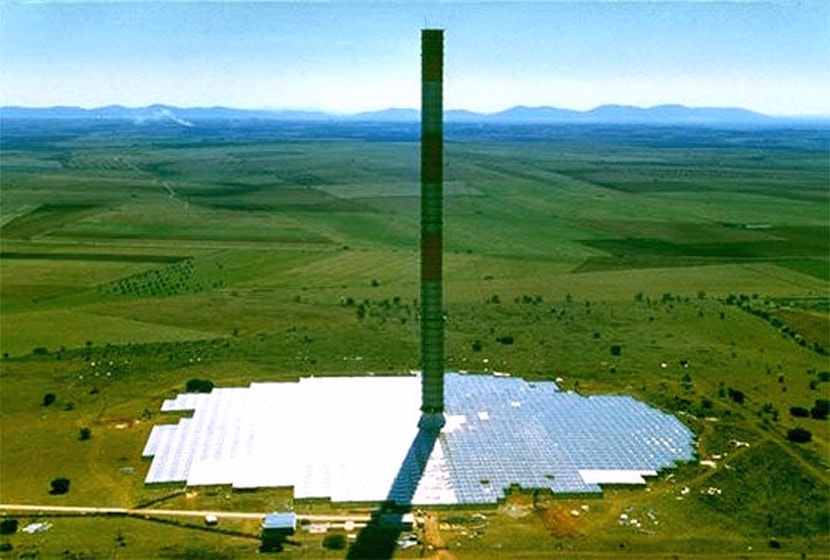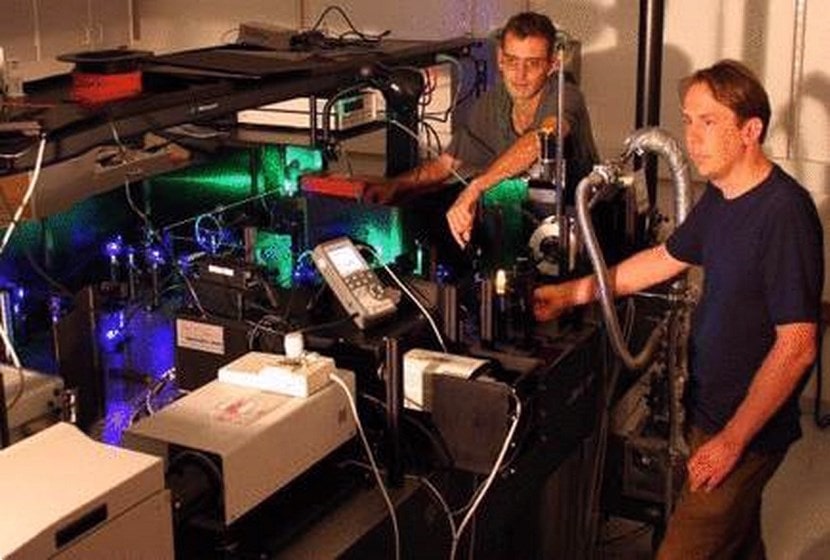Based on Joël de Rosnay's Chronicles on the Swiss Up website, made as predictions in the years 2002-2003, UP' Magazine proposes to retranscribe them here week by week, for a little reflection on the time that has passed. Was he right?
The possible surge in oil prices and the predicted shortage of black gold in the first third of the 21st century are bringing the promise of renewable energy back to the forefront of the world stage.
The major oil companies are investing considerable sums in this area to prepare for the major transition to a hydrogen rather than carbon economy, based in particular on fuel cells for transport, domestic use and offices. The fundamental issue, of course, remains the production of hydrogen. Today the main source is natural gas, a non-renewable fuel. The main route is obviously the electrolysis of water, but it requires large amounts of electricity. This is why many companies are moving towards the production of electricity by solar or wind power.
A chimney of 1 kilometer
In this context, one of the most futuristic projects is undoubtedly the engineer's "solar chimney". Jorg Schlaich of the University of Stuttgart, which will be operational in 2005 near the city of Mildura in the Australian desert, thanks to the efforts of EnviroMission and the Australian Government.
At a total cost of $700 million, the 1,000-metre-high chimney, surrounded by a circular greenhouse with a surface area equivalent to half that of Paris, will be the largest building ever constructed by man. The green light for its construction, which will begin in 2003, has just been given. At cruising speed it will produce 200 megawatts of electricity, enough to supply 200,000 homes or the entire needs of the city of Hobart.
A wind of 60 kilometers per hour
Its operation is simple. It is based on three principles that have been known for centuries: the chimney, the greenhouse and the wind turbine. Warm air rises up a chimney, which ensures its "draft". The 1000 m. tube, made of 25 cm thick prestressed concrete, creates a temperature difference of several tens of degrees between its base and its upper opening. This trumpet-shaped base, resting on its horn and covering an area of 200 m in diameter, is in fact surrounded by a plastic greenhouse 5 km in diameter.
The air in the greenhouse, heated by the sun, rushes up the chimney, creating a steady wind with an average speed of 60 km per hour, capable of permanently rotating wind turbines located in the extension of the base. To recover heat during the night, absorbent materials or circulating water socks are placed in the greenhouse, which ensures a sufficient thermal gradient and therefore 24-hour operation, in contrast to wind farms subject to the vagaries of the weather.
In addition, the turbines rotate with an efficiency 8 times higher than that of wind turbines installed outdoors, due to the "Venturi effect" caused by the narrowing of the chimney. The chimney operates continuously, like a nuclear power plant (8000 hours per year, compared to 2000 hours for wind turbines in the open air), which will produce 500 gigawatts/hour of electricity per year.
Covering the needs of a medium-sized city
This electricity can be used remotely to produce hydrogen by electrolysis of water and for lighting, heating or the industrial needs of a medium-sized town.
The most favourable locations for this type of solar/wind power plant are in North Africa and mainly in the Sahara, southern India, central Australia and, in the United States, in the California desert, southern Nevada, New Mexico, and western Texas. An experimental 50 kilowatt solar chimney built in the early 1980s in Spain operated without problems for two years. The cost of electricity produced by the Australian solar stack will be 70% per installed megawatt higher than that of a modern wind farm, but its continuous operation should, according to its promoters, turn into an advantage.
One question
One big question remains: by transforming solar radiation into heat, and thus reducing the ability of this radiation to reflect back into space, is there not a risk that this type of power plant will contribute to the greenhouse effect, even if it reduces CO2 emissions? The future will tell us whether deserts will become places of energy production. Not because of the wealth of their subsoil, but because of the wealth of their surface.
Chronicles by Joël de Rosnay on the Swiss Up website / Predictions 2002-2003 on Wifi, RFID, the future of Google, Grid computing, the student of the future... (Crossroads of the Future)
To go further :
– A 1000-metre high solar tower in Australia
{Jacuzzi on}












